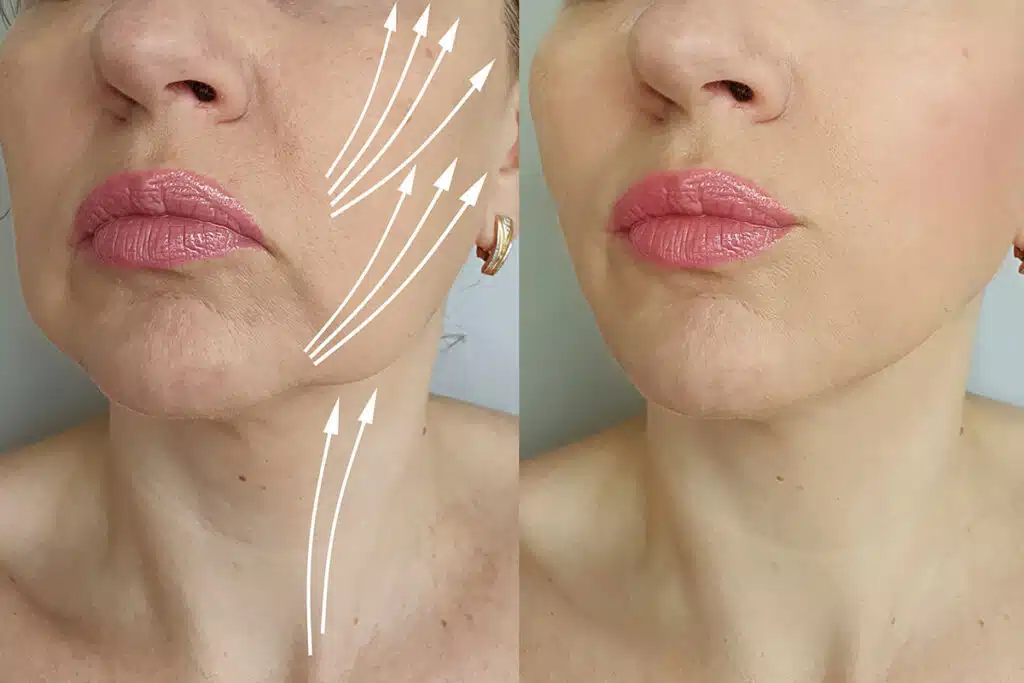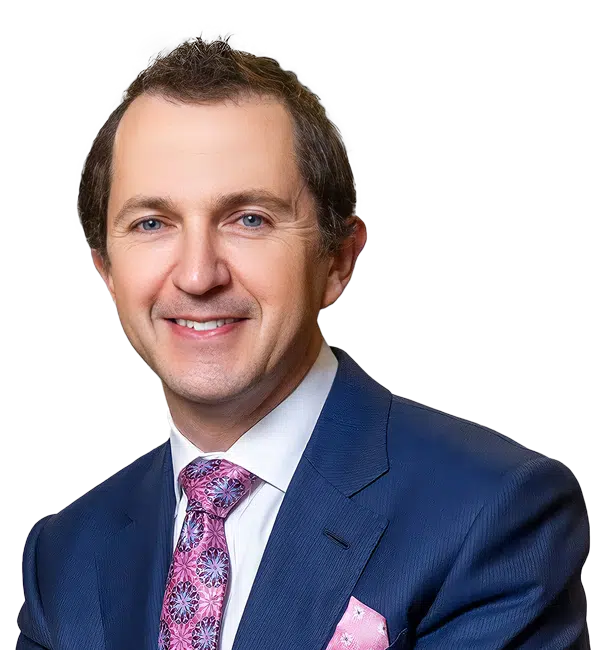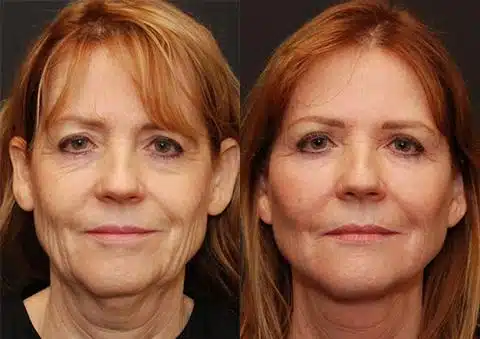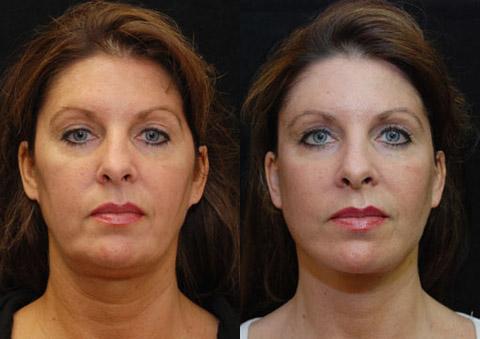Facelifts, whether mini or full , are powerful tools in the hands of talented facial plastic surgeons. These procedures can combat the signs of aging, tighten up excess skin, and restore a youthful appearance . As with any cosmetic procedure, the desired outcome often hinges on choosing the right procedure for the individual. Dr. Donath, a double board-certified facial plastic surgeon , offers insights into the distinctions between these two popular facelift options.

Key Differences Between Mini and Full Facelift
Mini Facelift vs Full Facelift: In-Depth
The Mini Facelift Procedure
A less invasive option that focuses on early signs of aging in the jawline and lower face.
🔹 Incisions: Shorter, hidden around the ears, making scars nearly invisible.
🔹 Tissue Repositioning: Tightens mild sagging in the lower face for a natural lift.
🔹 Excess Skin Removal: Provides a refreshed, youthful appearance without drastic changes.
💡 Tip: A mini facelift is a great option for those who want to prevent more severe sagging later in life.
The Full Facelift Surgery
A comprehensive procedure that corrects deep facial wrinkles, sagging jowls, and loose skin on the neck by repositioning deeper facial structures.
🔹 Incisions: Longer incisions along the temples, ears, and under the chin, but still nearly invisible.
🔹 Tissue Repositioning: Muscles and deep facial layers are lifted and tightened.
🔹 Excess Skin Removal: Significant improvement in jawline, midface, and neck definition.
💡 Tip: A full facelift is often paired with a neck lift or eyelid surgery for balanced facial harmony.
Mini Facelift Longevity of Results
✔️ Lasts 5–10 years, depending on genetics and lifestyle
✔️ Provides a natural enhancement but doesn’t correct deep wrinkles
✔️ Best for younger patients or those wanting a subtle refresh
💡 Tip: Consider Botox®, fillers, or laser skin treatments to maintain youthful results longer.
Full Facelift Longevity of Results
✔️ Lasts 10–15 years, thanks to deeper tissue restructuring
✔️ Ideal for advanced aging signs and severe skin laxity
✔️ Best for patients looking for a long-term, dramatic transformation
💡 Tip: To extend results, follow a high-quality skincare routine with SPF, retinol, and hydration.
Age and Skin Health for a Mini Facelift
A mini facelift is best suited for individuals in their late 30s to 50s who are starting to notice early signs of aging, such as mild jowling and slight skin laxity around the lower face. Ideal candidates have good skin elasticity, which enhances the procedure’s effectiveness. This option is perfect for those seeking preventative or subtle enhancements without waiting for more pronounced aging to occur.
Age and Skin Health for a Full Facelift
A full facelift is typically recommended for individuals in their 50s or older (though it may be done in the 40s and even late 30s) who are experiencing significant skin laxity, deep wrinkles, or sagging across the face and neck. It’s also effective for those with reduced skin elasticity, as the procedure addresses both surface skin and deeper facial structures. This comprehensive approach makes it ideal for those needing more advanced rejuvenation to restore youthful contours.

Mini Facelift Recovery Time
⏳ Recovery Time: 7-10 days.
😊 Swelling & Bruising: Mild, resolving within the first week typically.
🏃 Activity Restriction: Resume light activities within a few days
⌛ Final Results: Noticeable within 2–3 weeks
💡 Tip: Most mini facelift patients return to work within 7–10 days!
Full Facelift Recovery Time
⏳ Recovery Time: 10–14 days.
😷 Swelling & Bruising: More pronounced, lasting up to 2 weeks
🛌 Activity Restriction: Avoid strenuous activities for 2 weeks.
⌛ Final Results: Fully visible within 3–6 months
💡 Tip: Sleeping with your head elevated reduces swelling and speeds up recovery.
Mini Facelift Potential Complications
⚠️ Possible Risks:
- Mild swelling, bruising, or asymmetry
- Less dramatic improvement for severe aging
- Potential for infection and scarring
- Temporary tightness or nerve sensitivity
💡 Tip: Following post-op instructions carefully helps speed up recovery and optimize results.
Full Facelift Potential Complications
⚠️ Possible Risks:
- Temporary numbness or tightness due to deeper muscle adjustments
- Swelling and bruising that may last longer
- Potential for infection or scarring (though rare with an experienced surgeon)
💡 Tip: Always choose a board-certified plastic surgeon to minimize risks and ensure a successful outcome.
Mini Facelift Cost
💰 Cost: Typically between $6,000–$12,000, making it a more affordable alternative.
📌 Why? The procedure is less invasive and has a shorter recovery.
💡 Tip: Some patients choose a mini facelift first, then upgrade to a full facelift later when needed.
Full Facelift Cost
💰 Cost: Typically between $20,000–$27,000, depending on the surgeon’s experience and location.
📌 Why? A full facelift requires longer surgical time and deeper tissue work.
💡 Tip: A full facelift is a long-term investment in looking 10+ years younger!
Choosing the Best Surgical Procedure for Your Face
Both mini and full facelifts have their unique advantages and considerations, making them effective options for addressing facial aging. The choice between the two depends on your specific needs, aesthetic goals, and the extent of aging you wish to address. Consulting with an experienced facial plastic surgeon is essential to ensure the procedure aligns with your expectations and delivers optimal results tailored to you.
Dr. Alexander Donath, a dedicated board-certified facial plastic surgeon in Cincinnati, specializes exclusively in facial procedures. With years of expertise and a commitment to excellence, he offers patients unparalleled care and results. Dr. Donath has even developed his own advanced facelift technique, the “LuxeLift,” for superior, natural-looking outcomes. If you’re considering a facelift and want expert guidance and exceptional results, Dr. Donath is your ideal choice. Schedule a consultation today!

Mini vs Full Facelift FAQs
A deep plane facelift is a comprehensive plastic surgery procedure that focuses on repositioning the deeper layers of facial tissues, including muscles and fat, to achieve dramatic and long-lasting rejuvenation. It addresses significant signs of aging across the mid-face, lower face, and neck. This technique provides natural-looking results by lifting and tightening from within, rather than just pulling the skin, and is typically performed under general anesthesia.
In contrast, a mini lift is a less invasive procedure that primarily targets the lower face and jawline. It involves smaller incisions and focuses on mild to moderate skin laxity. While the results are more subtle and shorter-lasting compared to a deep plane facelift, the mini lift offers quicker recovery and minimal downtime. It’s often ideal for younger patients or those with early signs of aging.
Yes, combining other procedures with your facelift can enhance overall facial rejuvenation and provide a more harmonious transformation. Commonly paired treatments include eyelid surgery (blepharoplasty), brow lifts, or non-surgical options like dermal fillers, Botox, or skin resurfacing. These combinations address additional concerns such as fine lines, volume loss, or drooping eyelids. During your consultation, your surgeon can create a personalized plan to achieve a balanced, refreshed look tailored to your specific goals.
Non-surgical options like dermal fillers, Botox, thread lifts, and skin tightening treatments (e.g., Ultherapy or RF microneedling) can offer subtle improvements by addressing volume loss, fine lines, and mild sagging. While these treatments are less invasive and require little to no downtime, their results are temporary and not as transformative. For the most dramatic, long-lasting rejuvenation, a surgical procedure like a full or mini facelift remains the gold standard.
When choosing a facelift surgeon, prioritize expertise, credentials, and experience. Look for a board-certified facial plastic surgeon who specializes exclusively in facial procedures, as this ensures a high level of skill and focused training. Review their portfolio of before-and-after photos to assess their ability to achieve natural-looking results. Additionally, seek out patient testimonials and ensure you feel comfortable during consultations. A surgeon who listens to your concerns and provides clear, personalized recommendations is essential for achieving your goals.


